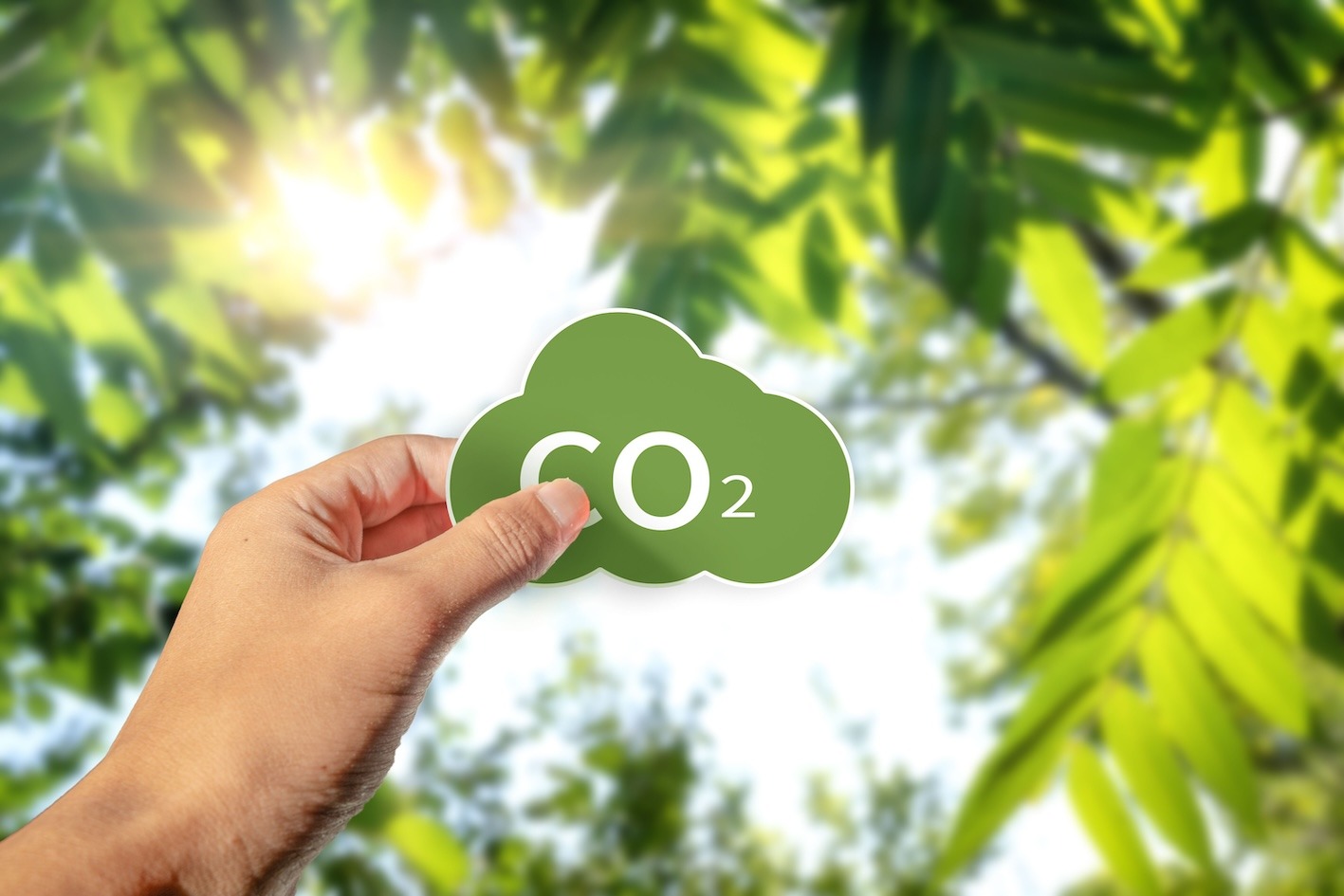Aligning Climate Contribution with CDP Reporting
CDP (Carbon Disclosure Project) is an international reference organization in the field of sustainability and the fight against climate change. As a key player in decarbonization, it plays a central role in promoting environmental transparency by encouraging companies, cities, and states to measure, manage, and disclose their environmental impacts. To learn more about CDP, read our dedicated article.
In addition to decarbonization efforts, CDP also provides clear guidance on the use of climate contributions as part of a comprehensive climate strategy. This article explores CDP’s recommendations regarding carbon credits, with a particular focus on the importance of credit quality and transparency in their use to mitigate the risks of greenwashing and ensure environmental integrity. When rigorously and complementarily integrated with direct emission reduction actions, offsetting can enhance the credibility of a climate strategy aligned with the goals of the Paris Agreement.
What is climate contribution?
Climate contribution is defined as a tool to accelerate efforts to limit global warming to 1.5°C. It must never replace a robust emissions reduction strategy. On the contrary, it complements a solid reduction plan based on a rigorous assessment of a company’s carbon footprint.
Unlike approaches focused solely on CO₂ avoidance or removal, climate contribution offers multiple co-benefits. It supports the achievement of the United Nations Sustainable Development Goals (SDGs), generating positive social impacts such as poverty reduction, gender equality, and access to energy. It therefore reflects an integrated approach to sustainability that combines environmental and social dimensions.
What is a carbon credit?
A carbon credit represents one metric ton of carbon dioxide equivalent (tCO₂e) that has been avoided or removed from the atmosphere. It also includes other greenhouse gases, converted based on their global warming potential (GWP), such as methane. These credits are generated by certified projects (e.g., VCS, Gold Standard) and are issued, tracked, and retired through dedicated digital registries.
There are two main categories of carbon credits: compliance credits (or emission allowances), which are used in regulatory systems like the EU Emissions Trading System (EU ETS), and voluntary carbon credits, which are traded on the Voluntary Carbon Market (VCM) to support non-mandatory climate commitments. While they can support a climate strategy or contribute to a net-zero approach, carbon credits should not replace direct emissions reductions. Their use must remain complementary and well-regulated to avoid the risk of greenwashing.
How can carbon credits contribute to the global climate neutrality?
To achieve global carbon neutrality, companies must focus their efforts on decarbonization while simultaneously supporting projects that reduce or remove carbon emissions. The more we support high-quality climate projects, the greater the positive impact on the climate and natural ecosystems. The optimal use of carbon credits is to treat them as a contribution toward a global climate goal. Global carbon neutrality requires both the reduction of greenhouse gas emissions and the enhancement of carbon removal capacity whether through nature-based solutions or technological innovations. Carbon credits contribute to both of these dimensions. Moreover, the projects financed through these credits often generate co-benefits, such as support for biodiversity, public health, and gender equality, in alignment with the United Nations Sustainable Development Goals (SDGs).
Growth and challenges of the carbon credit market
According to its Position Paper on Carbon Credits, CDP observes rapid growth in the global use of carbon credits. However, it also emphasizes that the lack of clear standards on transparency and credibility complicates the rigorous assessment of companies’ actual decarbonization efforts. The European Union aims to reduce its emissions by 55% by 2030 as part of its commitment to achieving climate neutrality by 2050. Yet, the absence of harmonized regulation on the global voluntary market leads to a lack of transparency, inconsistencies in reporting, and the risk of miscalculating emissions.
At ClimateSeed, we ensure the highest integrity and quality of carbon credits. We operate exclusively in the Voluntary Carbon Market (VCM). Thanks to our rigorous three-step process including risk analysis and in-depth project verification we make sure all projects are aligned with the Sustainable Development Goals (SDGs). We support companies in purchasing high-quality carbon credits through one-off acquisitions, multi-year agreements, or the early-stage financing of new projects. For enhanced transparency, our platform centralizes all relevant information: a detailed project portfolio, retirement tracking, certificates, and an intuitive dashboard that provides a secure transaction history.
CDP’s Position on Carbon Credits
In 2023, CDP published a position paper on carbon credits. This document outlines CDP’s perspective on the use of carbon credits and sets out three key guiding principles to be followed.
Principle 1: On Emission Reduction Targets
CDP recommends that companies first set clear and ambitious emissions reduction targets before turning to carbon credits. Credits should complement, not replace, direct emissions reduction efforts. Premature reliance on credits or using them as a substitute for tangible climate action can undermine the credibility of a company’s climate strategy. It also increases the risk of greenwashing and inaccuracies in carbon accounting.
According to the Science Based Targets initiative (SBTi), companies must establish both short- and long-term targets aligned with a 1.5°C warming trajectory. Other organizations, such as the Voluntary Carbon Markets Integrity Initiative (VCMI), the Oxford Offsetting Principles, and the UN High-Level Expert Group on Net-Zero (UN HLEG), also stress the importance of setting reduction targets before using carbon credits. For example, VCMI’s Claims Code of Practice allows companies to make credible climate claims only if they have committed to reaching net-zero emissions by 2050 and have publicly disclosed near-term targets. “If the use and disclosure of carbon credits are not credible, comparable, and consistent, they risk undermining the integrity of emissions accounting as a whole.” - CDP
Principle 2: On the Purchase of Carbon Credits
CDP emphasizes the importance of purchasing high-quality carbon credits. Only verified credits backed by sound scientific methodologies can ensure a real and positive impact. Companies must conduct proper due diligence to confirm that all necessary checks have been carried out this includes relying on rating agencies or reputable market intermediaries.
How to evaluate the quality of a carbon credit?
According to the CDP Carbon Credits Paper, for a carbon credit to be considered high-quality, several essential criteria must be met:
- Additionality : Emission reductions or removals must only be made possible through the financing generated by the sale of credits. If the project would have happened anyway, without such financial support, then the credit does not represent a genuine climate benefit.
- Permanence : Emission reductions must be durable over time. Projects must include monitoring mechanisms, risk management strategies, and compensation tools (such as buffers or insurance funds) to avoid any reversal, i.e. future carbon loss for example, in the case of a forest being destroyed.
- Leakage prevention : A project must not lead to the displacement of emissions to another site or sector. For instance, if deforestation is avoided in one area, it should not simply be shifted elsewhere.
- No negative impacts : Projects must be designed to avoid harming ecosystems, local economies, or communities. The active involvement of local and Indigenous communities is essential to ensure respect for human rights, protection of biodiversity, and social acceptability of the project.
The Integrity Council for the Voluntary Carbon Market (ICVCM) provides criteria to help ensure credit quality. CDP also recommends considering the risks of impact reversal and the potential negative economic or social side effects of a project.
Principle 3: On Carbon Credit Accounting
CDP calls for rigorous and transparent accounting of carbon credits to prevent double counting, double use, and double claiming. The use of carbon credits must be reported separately from greenhouse gas (GHG) emissions in corporate disclosures.
According to the framework of the Integrity Council for the Voluntary Carbon Market (ICVCM), credible carbon accounting relies on avoiding the three main types of double counting:
- Double issuance (multiple credits issued for the same emission reduction),
- Double use (the same credit used more than once),
- Double claiming (the same reduction claimed by both a country under its Nationally Determined Contributions, or NDCs and a private company).
These errors undermine the environmental integrity and credibility of climate commitments. To ensure transparent use of carbon credits, CDP recommends relying on recognized credit registries, which provide clear traceability regarding the project, the year of issuance (vintage), the status of the credit, and its origin. It is also essential to distinguish carbon credits from gross emissions (Scope 1, 2, and 3) in reports, to avoid confusion between emission reductions and offsets. Furthermore, companies must disclose detailed information on the credits they use: volume, project name, certification standard, demonstration of additionality, issuance date, and the method of credit retirement (retirement, usage, or cancellation), in line with VCMI’s Claims Code of Practice.
CDP collects data via its Climate Change Questionnaire to assess companies’ progress toward targets aligned with SBTi, including details on cancelled or retired carbon credits. This helps position a company along its decarbonization trajectory at the time it chooses to use credits.
Since 2023, CDP has expanded its questionnaire to include more precise information on the quality of credits: verification method, project type, standard, and criteria such as additionality, non permanence risks, emission leakage, and environmental and social safeguards. Dedicated fields now allow companies to report the credit type, the standard used, and the method of retirement. New columns also provide detailed explanations for assessing additionality, risk management strategies, and measures to avoid negative environmental and community impacts.
These requirements are designed to align with the frameworks of ICVCM and VCMI, ensuring international consistency in the accounting and use of carbon credits.
Conclusion
Climate contribution can play a meaningful role in a company’s climate strategy, provided it is implemented with rigor, transparency, and as a complement to genuine emission reduction efforts. The use of carbon credits must never replace direct climate action, but rather be part of a strategy aligned with net-zero pathways and international best practices. Through its Climate Change Questionnaire, CDP provides a structured framework for evaluating the quality, transparency, and integrity of carbon credit use. By requiring detailed data on projects, standards, social and environmental safeguards, and credit verification, CDP helps companies make their climate commitments both credible and traceable.
At ClimateSeed, we share this commitment to transparency and integrity.
By operating exclusively within the Voluntary Carbon Market (VCM) and applying a rigorous project selection process, we help companies identify high-quality carbon credits, including premium credits, that can strengthen their sustainability strategies. These climate contributions can be credibly integrated into their non-financial reporting and effectively communicated within established frameworks such as CDP’s.
Q&A
CDP contribution refers to an organization’s voluntary disclosure of data related to its greenhouse gas emissions, climate risk management, and environmental initiatives, in order to promote environmental transparency.
A strong CDP score builds investor confidence, enhances a company’s reputation, and facilitates access to markets that prioritize sustainability.
No, CDP reporting is voluntary. However, many companies choose to participate to demonstrate their environmental responsibility and respond to growing expectations for transparency.
Companies report detailed information to CDP about their direct and indirect emissions (Scopes 1, 2, and 3), their emissions reduction strategies, and their climate contribution initiatives.
CDP reporting helps companies identify their environmental impacts, allowing them to better target and prioritize their climate contribution initiatives.
Share this
You May Also Like
These Related Stories

Understanding the VCMI’s Role in the Integrity of Voluntary Carbon Markets

How to effectively communicate about carbon offsetting?


